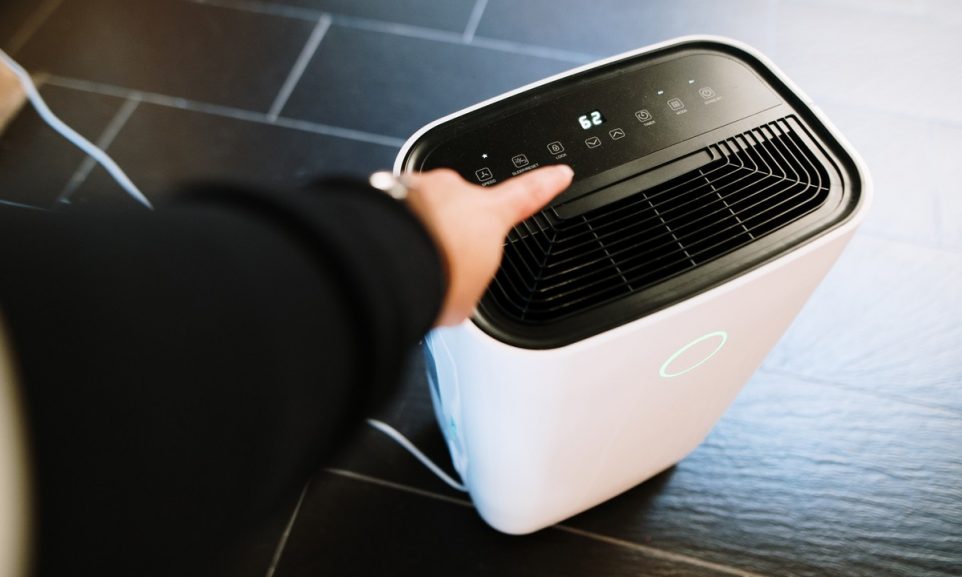What is the Purpose of a Dehumidifier?

If you’re like most people, you might not think about having a dehumidifier unless summer is around the corner when humidity levels in your home start becoming unbearable. Humidifiers are actually useful all year round. The human body needs some humidity to function properly, but excessive humidity can do more harm than good.
While less humidity causes discomfort issues like chapped lips, dry eyes, nosebleeds, and cracks in wooden furniture, excessive humidity makes your home a perfect breeding ground for mildew and mold. That’s where a dehumidifier comes in — it helps you remedy the excess moisture problems and works like magic for those who suffer from seasonal allergies.
Purpose of a Dehumidifier
According to a recent report by the National Institutes of Health (NIH), allergens can trigger asthma and allergic symptoms in people with sensitive airways. The NIH also suggested using a decent dehumidifier to control the exposure to allergens or triggers and one such common trigger is mold, which grows due to excessive humidity.
Here are some common benefits of a dehumidifier that are enough to convince you to use one:
Minimizes the Effects of Allergies
Environmental allergies produce wheezing, sneezing, chest ache, eye discomfort, and itching. The common causes of allergies include mold, dander mites, pollen, and pet hair. You can simply use a dehumidifier to dry up the air in your home to control your environment.
Dust mites require 80% humidity to proliferate and a dehumidifier controls the amount of moisture with ease.
Helps With Asthma
Moisture makes the air heavier and usually makes breathing more challenging. A dehumidifier can make your breathing experience better because the air becomes colder and more pleasant as the humidity is reduced.
Produces Healthy Environment
Mold and dust removal also gets rid of pests including silverfish, cockroaches, and spiders. People with Chronic Obstructive Pulmonary Disease (COPD) could also take advantage of lower humidity levels. A dehumidifier also helps in cooling down your house and minimizes the need for an air conditioner if you are in a naturally humid area.
How Does a Dehumidifier Work?
A dehumidifier works by using a fan to pull warm air into its coils, which results in condensation that collects and falls into a storage tank. The opposite side of the unit then releases cooler, drier air back into your house.
The dehumidifier reduces the relative humidity of the air to between 30% and 50%. Many dehumidifiers come with a sensor, allowing you to adjust the humidity to the desired level.
When Should You Use a Dehumidifier?
In addition to experiencing ongoing allergy issues, you should think about using a dehumidifier if your home shows any of the following visible signs of high humidity:
- Water stains on the walls or ceiling
- Rooms with high humidity and either little or no ventilation (particularly in places like toilets that lack windows)
- Continuous mist on your home’s windows in some place
- Small black patches develop on the walls or in moist places like the shower or bathtub
- The musky smell of mold or mildew
If you live in a flat community, you should think about getting a dehumidifier because mold can spread through ventilation systems and accumulate in the walls between flats. These pollutants from other parts of the building can be dangerous for you and your family even if you keep your apartment squeaky clean.
The Verdict!
Dehumidifiers come in a variety of designs, and the one that will work for you depends on the humidity levels in the room where you plan to use it as well as the area itself. Consider investing in a dehumidifier with extra features if you have some specific requirements. You should buy a dehumidifier if you suffer from allergies or other conditions for a healthier, happier life.
Decades of Combined Expertise
Best Buy Guidebook is a culmination of online publishing lessons learned. From SEO to paid ads, our team has experienced the highest of highs and the lowest of lows. Our goal now is simple: Arm readers with the most information possible.
